You Can Also Do It! Valley of Flowers Trek Experience will Enlighten True Feeling of Traveling
Published: byVishwanath R,06 Feb, 2017
Places I explored :
Located in Western Gharwal Himalayas, Uttarakhand the Valley of Flowers sits amidst picturesque mountains, valleys and running streams. The valley abounds in rich and endemic flora and fauna and has been attracting botanists, naturalists, photographers and trekkers since long. The discovery of the valley is credited to Frank Smith, who in his Kamet Expedition in 1931, camped in the valley to collect materials for his scientific book. He took the seeds of flowering plants from this valley to the Botanical Gardens in Scotland and Edinburg. Following the discoveries and stories of Frank Smith, an English botanist by the name of Joan Margaret Legge trekked to the Valley of Flowers in 1939 to collect more flower samples but unfortunately lost her life in an accidental fall from a rock. Today, a small memorial sits in the place of her camp and to remind her love for the Himalayas, her tombstone reads œI shall lift my eyes up to the mountains, from whence cometh my help.
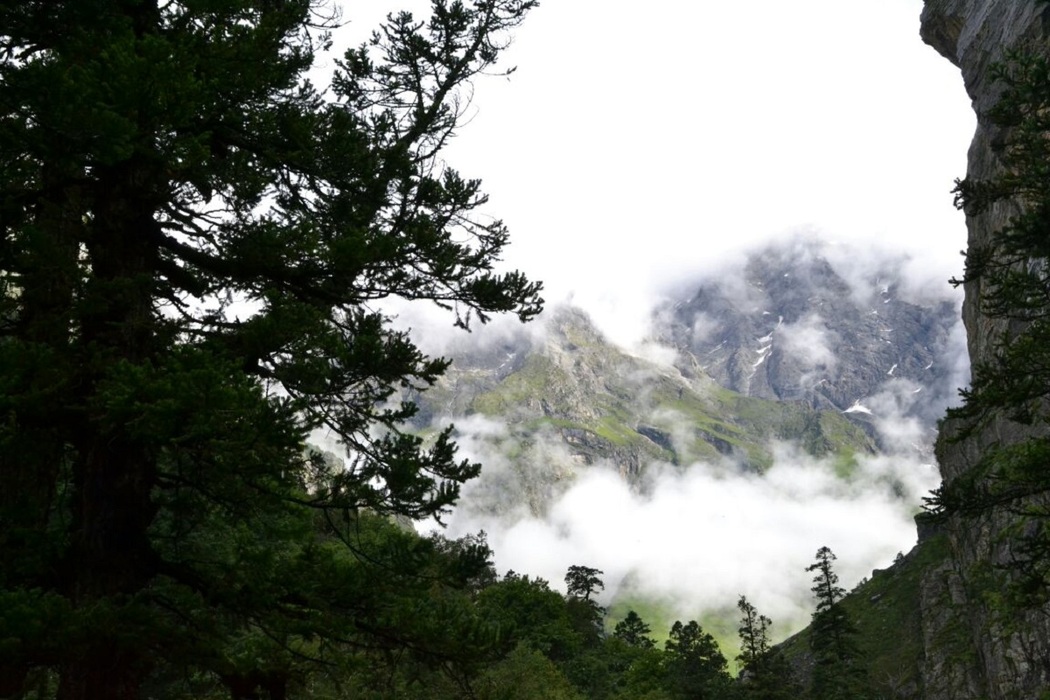
While the above discoveries make the Valley of Flowers a recent exploit, ancient Hindu texts suggest that this was the ancient valley wherein grew the famous Sanjeevani buti, a magical herb that could cure anything. It was even believed that Sanjeevani the buti could help revive a dead person. The Valley of Flowers is also the place where Lord Hanuman came in search for the Sanjeevani Buti and decided to lift up the whole of Mount Sumeru and flew it to the battlefield. Today, there have been several scientific studies on the endemic herbs growing at the Valley of Flowers and interestingly, we have more than one candidate that could possibly be the legendary Sanjeevani plant. These include the Cressa cretica, Dendrobium plicatile, Selaginella bryopteris and many more.
Legends apart, there are little chances that one wouldn ™t get cured when in the Valley of Flowers. Situated at a height between 11000 feet and 14000 feet, the valley comes alive every spring where flowers of all colors cover the mountain floors. The 10 kilometers long stretch of the concave valley is a treat to anyone. Further, the immense flower bed is divided along the length by the Pushpavati River with several small rivulets and waterfalls rushing down from the glacial deposits high up in the Himalayan peaks. This keeps the stream perennial and the Pushpavati provides for the rich biodiversity in this mysterious part of the Himalayan range. River Pushpavati goes on to join the Laxman Ganga at Ghangaria and the combined stream merges with the Alaknanda flowing in from Badrinath at the Govind Ghat.

The Valley of Flowers is the second core zone under the Nanda Devi Biosphere Reserve and also lies within the boundaries of the Western Himalayas Endemic Bird Area (EBA). Important wildlife in this part of the Himalayas include seven restricted range species of birds, Grey Langur, Himalayan Black Bear, Flying Squirrel, Red Fox, Himalayan Weasel, Himalayan Yellow Throated Martin, Himalayan Goral, Himalayan Musk Deer, Indian Chevrotain, Himalayan Thar, Serow, Blue Sheep, Bharal, Snow Leopards, Himalayan Monal, Himalayan Vulture, Red and yellow Bellied Choughs, Koklass Peasant, Snow Pigeons, and more.
Following the Pushpavati Stream, there lays a popular trekking route that most enthusiasts at the Valley of Flowers take. However, to reach the entry to the Valley of Flowers, trekkers will have to get across the massive Ghoda Parvat and Rataban Peak. Trekkers will be passing through the picturesque Bhuyandar Pass to emerge in the pastures of Gamsali Valley and Bank Kund and eventually the last Indian village called Niti before stepping into Tibet.
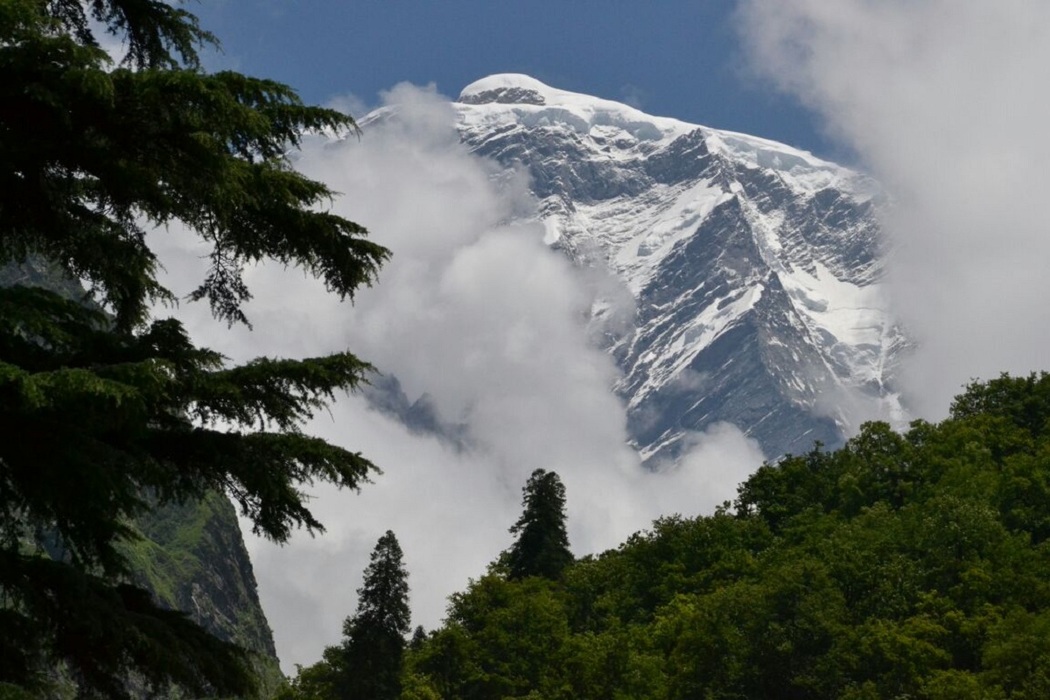
Some of the most colorful of flowering plants in this part of the valley include the Pedicularis, Pink Primulas, purple Campanullas , Golden Lily, Erigerons , creamy Anemones, the rare white Androsace , large purple Asters, the rosy-petalled Cypripedium, Green and chequered Fritillaries, Morina Longifora, Pink Geranimus, purple , blue and yellow Pansies, indigo-colored Nomochairs, the Himalayan Blue Poppy, white and red Potentillas, dwarf Rhododendrons - Buransh, golden lily, Primulas in pink and blue and the deepest purple, pink Epilobium, Ranunculus, Bistorta and the heavily perfumed Brahma Kamal. The distance from the Valley of Flowers till the Ghangaria is a total of 4 kilometers and till the Hemkund Sahib is a total of 5 kilometers.
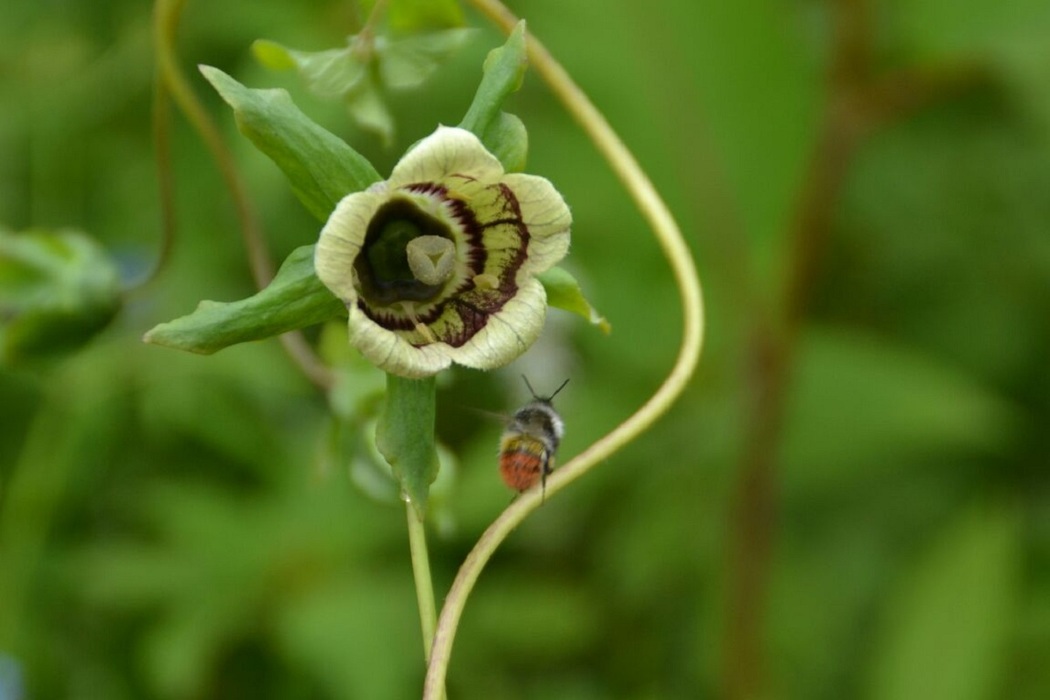
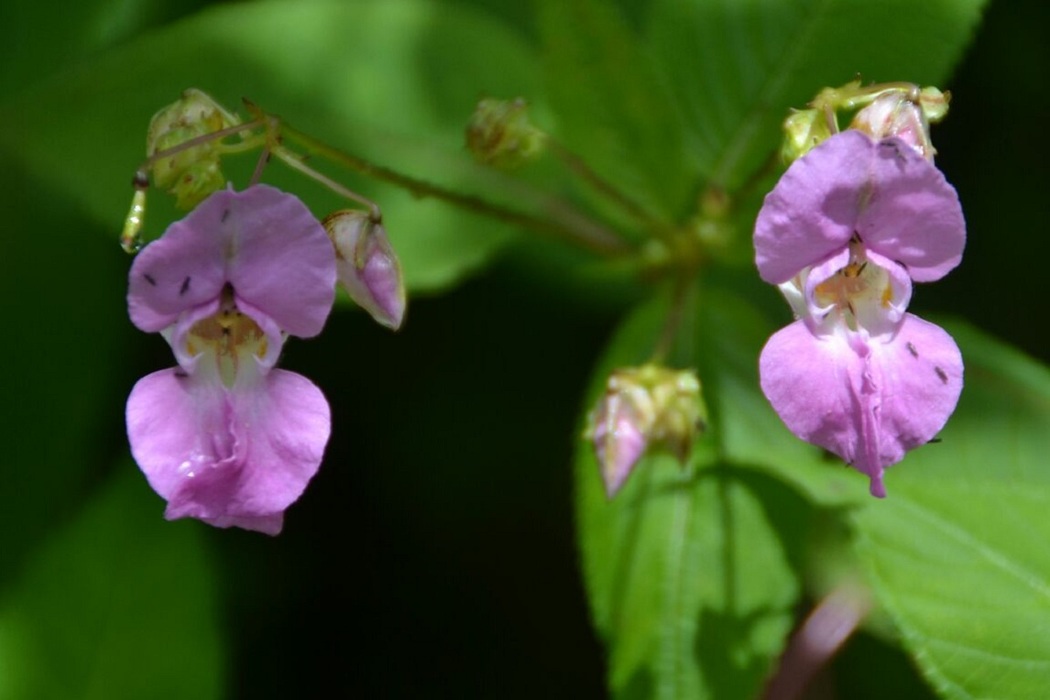
Another trek through the Valley of Flowers starts after crossing the suspension bridge at Alaknanda and then taking the right bank of the Lakshman Ganga along a mountainous path. The trek will take you through scary dense vegetation and the famed whispering forests along the Laxman Ganga. It will be at the 10th kilometers that you will emerge into open grasslands at the Bhuyandar Village and then on to the beautiful valley towards the Kagbhushandi Taal. You will be walking along the Valley of Flowers for 3 more kilometers along the Laxman Ganga and finally cross over to Ghangaria. It would be a zigzag climb that has to be done very carefully. The Ghangaria landscape is marked by giant Deodar trees and acts as a conjunction/resting place for trekkers to both Lokpal Lake and Hemkund Sahib. Since overnight camping in the Valley of Flowers isn ™t permitted, trekkers and visitors spend the night at Ghangaria before moving on.

While these two are the most famous trekking routes that take you across the Valley of Flowers, a new route has been reopened after 45 years. The starting point of this trek is at Bankund for which one needs to cross the Ghangaria. This is a continuation of the Alaknanda - Ghangaria Trek but passes along a rich natural landscape that has been missed for many years. At Ghangaria, trekkers will need to set up camp at Palsi Udiyar and the cross the Kunth khal Pass the next day. Further journey takes you to Hanumanchatti along the Badrinath Road. This would be the stop that gives you the best ever view of the Valley of Flowers National Park and the Nilgiri Peaks. It certainly would be a sight and an experience of a lifetime.
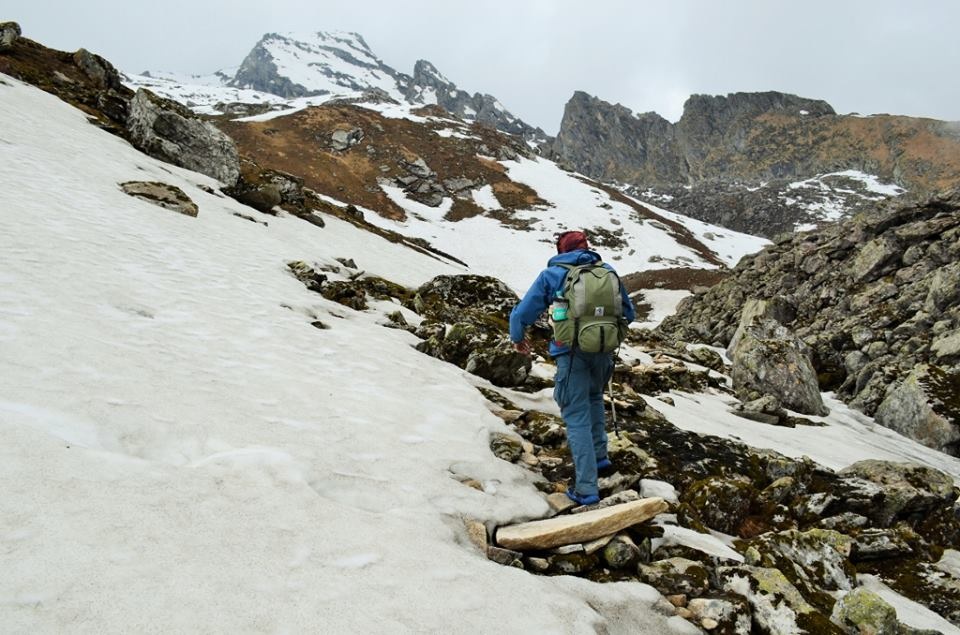
Best time to visit Valley of Flowers
The emerald mountains, white clouds, green meadows and colorful plains easily paint dreamlike scenery in this valley. Added to the charm are the cascading waterfalls that are abundant as you trek along any route. The valley was declared as a National Park in 1982 and is also inducted into the UNESCO list of World Heritage Sites. However, depending on the season, the Valley of Flowers takes on different form, each unique in its visual and offerings. During the winters, the valley remains completely covered in snow and is the best time to visit if you are looking for the magnificent view of the glacial peaks. However, if you want to experience the valley in its full bloom, the months between July and September are the most opportune. The swaying flowers, the rhythmic gurgle of the Pushpavati, and the chirps and creeks of the wildlife around will easily get you into a trance. Locals have continued to believe that the valley had been created by fairies and not wonder, it 's nothing short of a fairy land.
For trekkers, Ghangaria serves as the common base camp for any trek across the Valley of Flowers. There are several privately run hotels and lodges that you will find in Ghangaria and would be a good start to your 2 day long trek. Remember that no camping or lodging inside the Valley of Flowers is allowed and Ghangaria consequently, is the best stop. The Valley of Flowers is run and administered by the Ministry of Environment, Forest and Climate Change (MoEF&CC) and Uttarakhand State Forestry Department. The valley also doesn ™t permit for any kind of grazing to protect the endemic flora.
The Valley of Flowers is opened to trekkers and tourists on the 1st of June every year and closes on the 4th of October. For entry to the valley, you will need to take permission of the State Forest Department. It 's a smooth and easy process and won ™t be too much of a hassle. The entry fee to the Valley of Flowers for Indian nationals is INR 150 and INR 600 (US$10 approx) for foreigners. Each ticket is just valid for just three days but you will need to pay INR 50 (Indian nationals) extra for every extra day spent. Foreigners will need to pay INR 250 for every extra day spent. Still cameras taken into the valley of flowers are non-chargeable but for professional video cameras, the charges are INR 500 / day for Indian nationals and INR 1500 / day for foreigners.
How to Reach Valley of Flowers
The Valley of Flowers is remotely located in the Chamoli District in Uttarakhand. It takes a minimum of 3 days to reach the base from Haridwar by road. The last motorable stop to the Valley of Flowers is at Govind ghat and from then, it 's a walk on foot.
Customize your dream vacation with our best India tour packages.
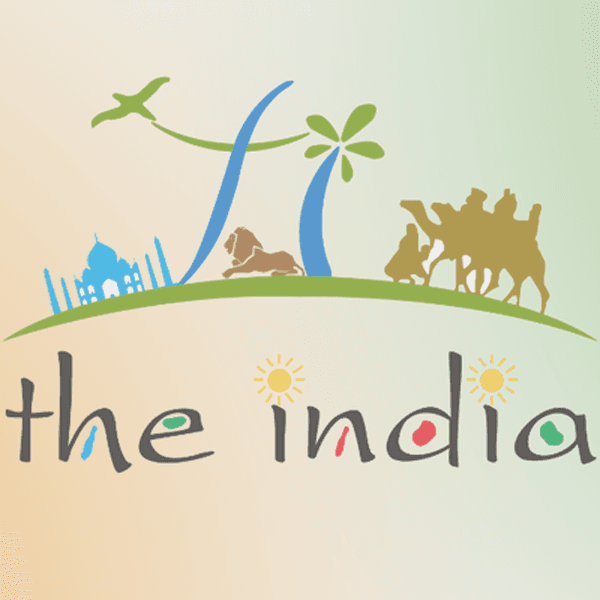
Thanks for sharing such beautiful information. I hope you will share some more information and Please keep sharing. Valley of Flowers Trek Cheapest Package details with Himalayan Climber Package start from INR 6000/ more details - https://www.himalayanclimber.com/tours/valley-of-flowers/ https://www.himalayanclimber.com